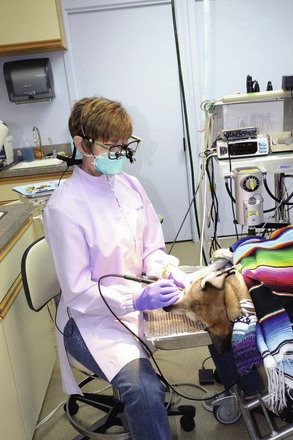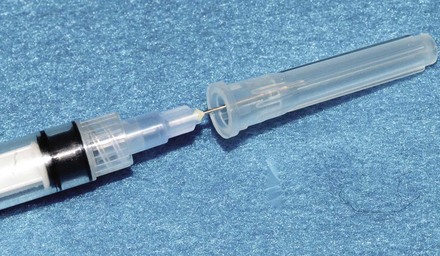4 Personal Safety and Ergonomics
When you have completed this chapter, you will be able to:
• List the safety equipment required for use when performing veterinary dental procedures.
• Discuss the rationale for use of eye protection, face masks, and gloves when performing veterinary dental procedures.
• Describe proper hand-washing techniques.
• List the information that must be included on the label of a chemical container.
• Describe the symptoms of repetitive motion disorders for which a veterinary dental technician is at risk.
• Define ergonomics and discuss methods to address prevention of workplace injuries in the veterinary dental practice.
Safety Requirements for Veterinary Dentistry
For the veterinary dentistry practice, OSHA requires that the employer provide safety glasses, masks, and gloves for all employees who perform dental procedures (Figure 4-1). The employee is responsible for wearing the safety equipment during all procedures. After all, it is the employee’s health that is at stake, and flying debris or other substances can easily cause infections if the employee neglects to wear the safety protection provided. Employees must always be careful to take responsibility for their own safety by wearing the necessary safety equipment and should not expect their employers to remind them before each potentially hazardous procedure.
Sharps
Needles are another source of potential infection. To keep from accidentally stabbing themselves, employees should never recap needles with both hands. The needle cover should be scooped up with one hand with the needle (Figure 4-2) or simply discarded in the sharps container. Sharps containers should be disposed of properly when they reach the full line. To prevent punctures when inserting needles, employees should never continue to pack additional needles in the containers after they are full.
Stay updated, free articles. Join our Telegram channel

Full access? Get Clinical Tree




